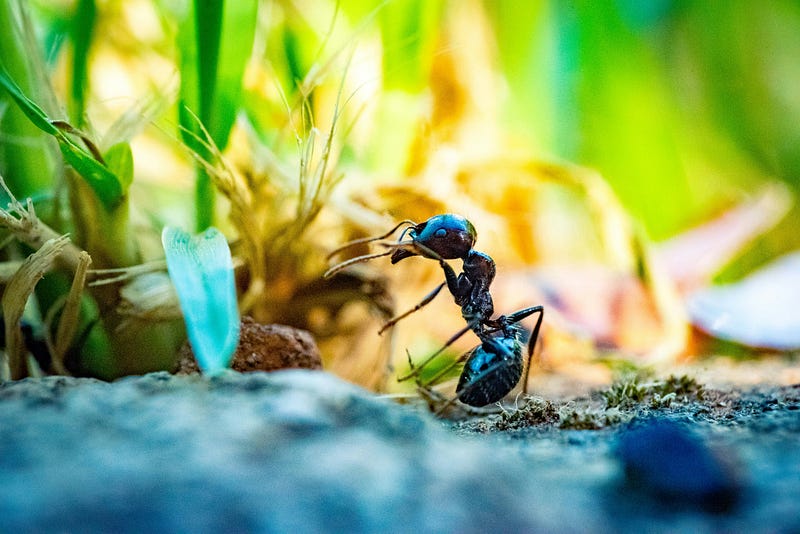Why Ants Can Survive Falls That Would Kill Humans
Written on
Chapter 1: The Mystery of Ant Survival
Have you ever wondered why ants can fall from significant heights without suffering fatal injuries? Even a small ant falling from a table won't meet its end upon impact. To put this into perspective, a 5-millimeter-long ant dropping from 1 meter is akin to a human falling from about 300 meters. Such a fall for a person would likely result in severe injury or death. So what sets ants apart from humans in this scenario?
The primary reason ants can survive such falls is due to the greater impact of air resistance on their small bodies compared to humans. As the size of an object decreases, the ratio of surface area to volume increases. Consequently, forces that are proportional to surface area—like air resistance—become much more pronounced relative to gravitational forces, which scale with volume.
To illustrate this, consider if a human were reduced to one-twentieth of their original size and dropped from a height of 1 meter. At smaller sizes, air resistance, or aerodynamic drag, becomes proportional to both the square of the falling speed and the surface area exposed to the air. As an object falls, it accelerates due to gravity, but air resistance increases concurrently. Eventually, a balance is reached where the force of gravity equals the air resistance, stabilizing the falling speed at what is known as "terminal velocity."
For example, a human weighing 60 kilograms falling face-first can reach a terminal velocity of about 159 kilometers per hour. In contrast, a "miniature human" scaled down to 1/200th of their size would have a terminal velocity of roughly 3.1 meters per second (or about 11 kilometers per hour). This speed is almost the same as that of a typical person jumping from a height of just 50 centimeters.
In essence, if a human were shrunk to the size of an ant and fell from 100 meters, the impact would be so minimal that they could land safely and comfortably.
Additionally, as an organism's size decreases, the effects of various forces acting on its surface become more significant. For instance, small insects like ants and spiders, as well as animals like geckos, can adeptly climb vertical surfaces. Many of these creatures possess specialized adhesive structures on their limbs that allow them to stick to surfaces through friction and intermolecular forces.
The influence of these adhesive forces relative to gravity increases in smaller bodies, enabling them to scale walls effortlessly. Some organisms even exploit their diminutive size to achieve flight. The “thrips,” a minuscule insect measuring less than 1 millimeter, doesn’t rely on membranous wings for flight like other insects. Instead, it uses stick-like appendages covered in fine hairs to agitate the air for lift.
At such small scales, the viscosity of air plays a crucial role, facilitating unique flight mechanisms. If humans were shrunk to a mere millimeter in size, they might find themselves soaring through the air by waving feather-like appendages.
Section 1.1: Exploring the Physics of Falling

Chapter 2: Understanding Terminal Velocity
In this first video, titled "Will an Ant Survive Being Dropped Off a Building? The Insect Drop Experiment," we delve into the fascinating world of insect resilience and the physics behind their survivability after falls.
The second video, "Do Bugs Take Fall Damage?", further explores the concepts of fall damage in insects, analyzing how different species cope with gravity and impact.